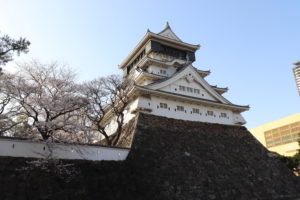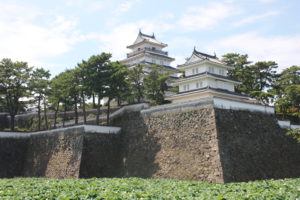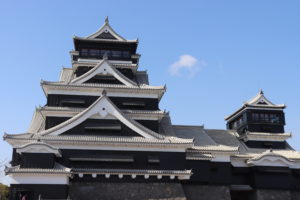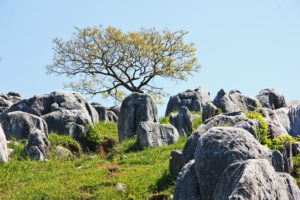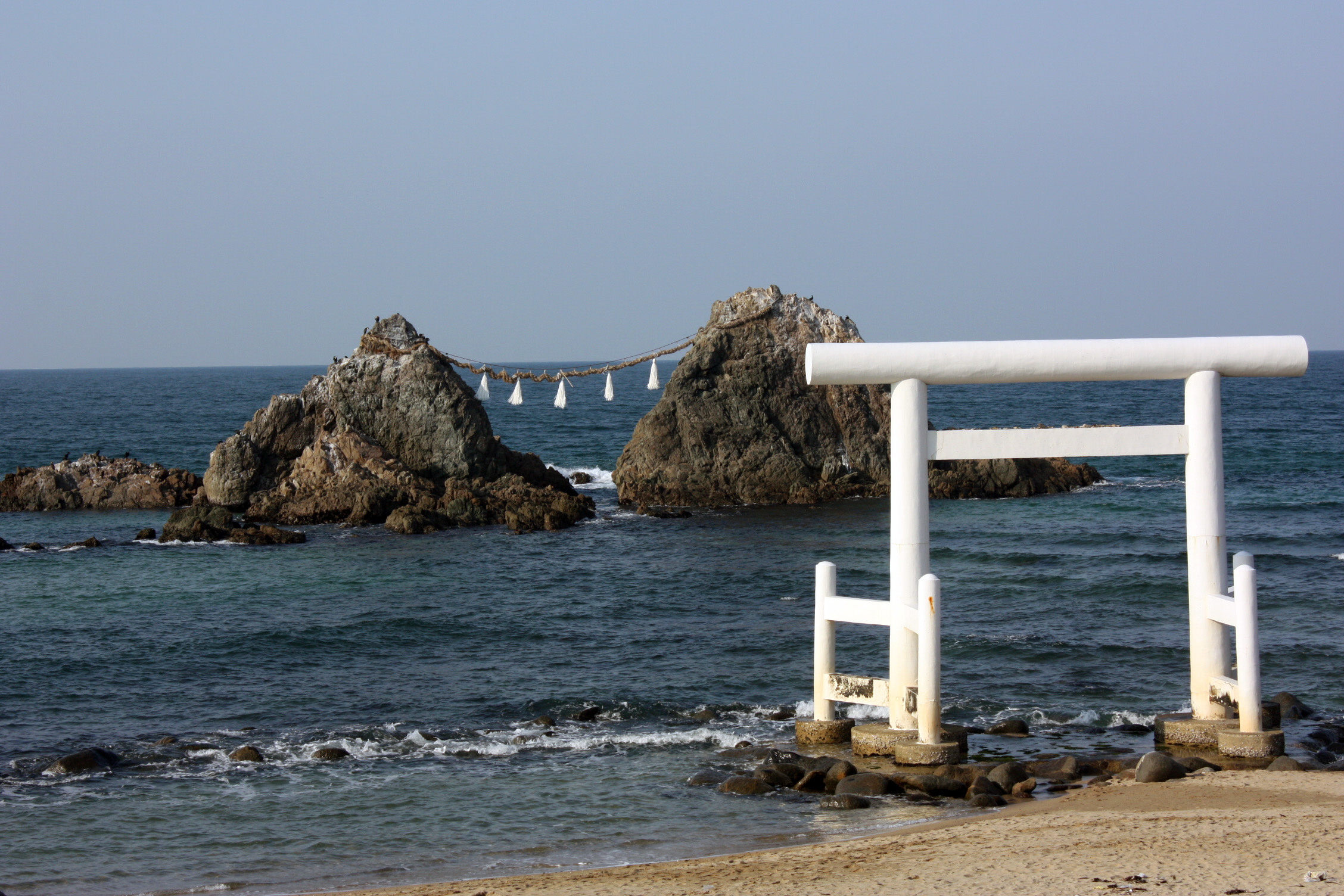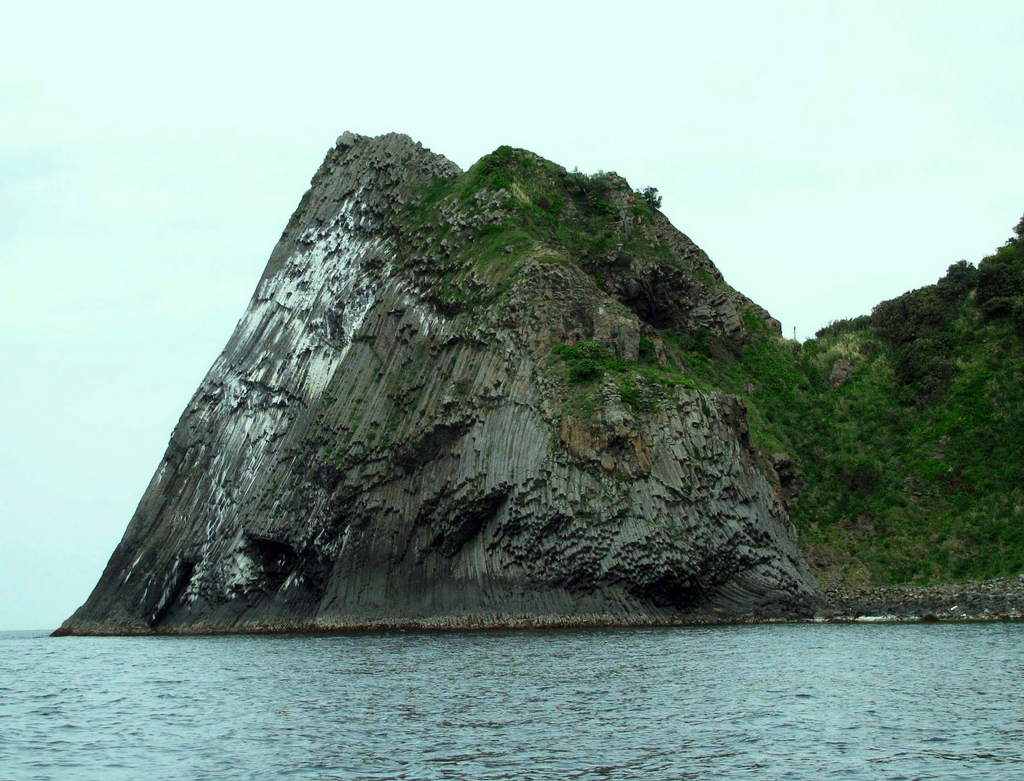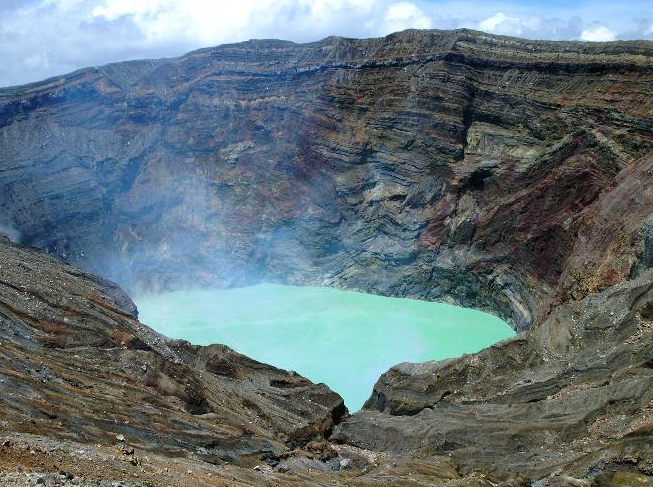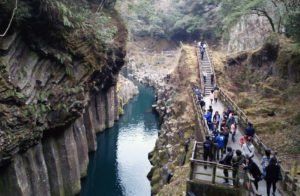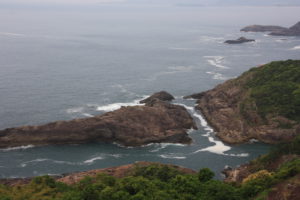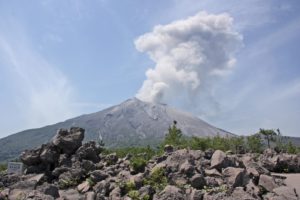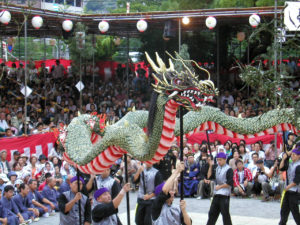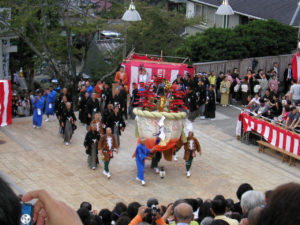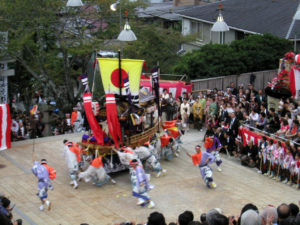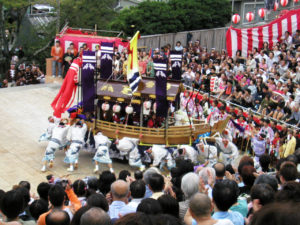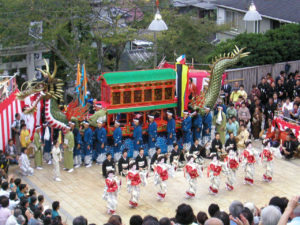Nagasaki Lantern Festival
An annual festival in Nagasaki held on Chinese new year. The festival has been started to
celebrate a new year by Chinese who lived in Nagasaki, and it became the Nagasaki’s festival
since 1994. More than 10 thousand lanterns are decorated at China town during the festival.
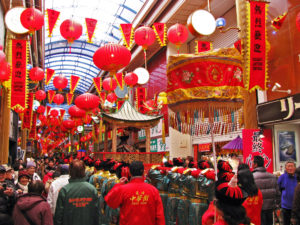 |
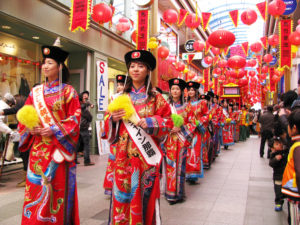 |
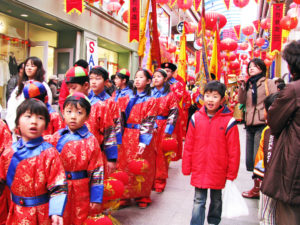 |
Kokura Gion Daiko (小倉祇園太鼓)
Japanese Castle
Long ago Japan was divided into many small provinces. The lords of each province fought to take
each other’s territory. Castles were built by the lords to show off their power and control their provinces.
They were both residences and military bases. They were made of wood, but used various defensive
devices for protection. For example, moats were built around some castles.
Additionally, many castles were built on plateaus or hills. The slopes were then steepened, making
them difficult for enemies to climb. In some castles the grounds from the gate to main building were
designed like a maze to confuse enemies.
The main castle building is usually in the center and is called the Tensyukaku (Castle tower).
They are tall and magnificent structure. The loads and their immediate servants lived in the Tensyukaku.
Castles in Kyushu
Home Tailor-made tours Study tours Christian Pilgrimage tours Golf tour Kyushu tour packages
Nature in Kyushu
Kyushu has rich landscapes including nature and diverse cultures including food cultures.
And also, Kyushu is known as ‘Onsen island’ and there are many Onsen resorts to stop into
while you’re travelling around.
Hiraodai Karst Plateau & Caves in Kitakyushu
 |
The height of the mountain is 622 meters from sea level. At the top you are presented with a magnificent and spectacular view of Kitakyushu. Three Major Night View of Japan from Mount Sarakura to be experienced. The beautiful night view is created by combination of industrial zones and rich nature areas. |
Sakurai Futamigaura in Itoshima
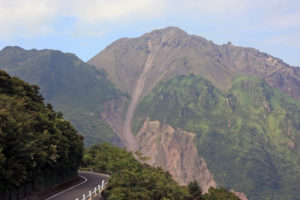 |
Unzen is a gentle Onsen resort situated in the Unzen National Park. The Resort area was originally developed for foreigners as a place close to Nagasaki-city. It is started receiving foreign tourists around the year 1900 when Kaempfer and Siebold introduced the city to Europe and China. |
Home Tailor-made tours Study tours Christian Pilgrimage tours Golf tour Kyushu tour packages
Wasshoi Million Summer Festival
Wasshoi Million Summer Festival is one of the festivals representing Kyushu and started in 1988
to commemorate the 25th anniversary of the formation of the city and has more than one and half
million spectators every year.
On the first day (Saturday),after the opening ceremony parade, festivals representing each of the
One of the greatest highlights is the firework display,this spectacular show marks the finale of the festival.
・Direction : A 15 min. walk from JR Kokura Station
Home Tailor-made tours Study tours Christian Pilgrimage tours Golf tour Kyushu tour packages
Hakata Dontaku Festival
Hakata Dontaku Festival, the name Dontaku is a corruption of the Dutch word
Zontag, meaning Sunday.
The festival is said to have started as a New Year parade of merchants going
to the local lord’s residence to celebrate. It is held on May 3 and 4 in Hakata,
Fukuoka-city.


About 30,000 of local townspeople take part, and its attractions include the
traditional Matsuribayashi parade, a fancy-dress parade and a shamoji band.
gods Fuku-no-Kami, Ebisu and Daikoku, on horseback.
It is believed in Fukuoka that babies carried under the kasahoko will grow up strong
and healthy.
spatulas used for serving rice.
Tamaseseri / wooden ball catching festival
at Hakozaki Shrine in Fukuoka-city, including a traditional form of fortune-telling.


Several hundred men wearing lion cloths compete on piggy-back in
two teams, the “sea” team and the “land” team team, for possession of
a wooden ball.
If the sea team wins, a bountiful fishing catch is predicted for the year;
if the land team wins a rich harvest is predicted.
Hojoya
It has a history of over 1000 years.


Hundred of doves and carp will be released on September 18 in reverence
of all living things, a solemn mikoshi (shrine) procession take place
on the 12th.
Most visitors are usually happy just to amble about, doing little more than
munch on grilled food, gulp cold beer and amuse themselves with
traditional sugar-cutting or goldfish catching games.
slice of old-time festivities in Fukuoka.
Home Tailor-made tours Study tours Christian Pilgrimage tours Golf tour Kyushu tour packages
Sumo
wrestlers in the round ring called Dohyo.
into touching the ground with anything other than the sole of feet,
there are 48 wining techniques.
Nagasaki Kunchi
Nagasaki Kunchi is one of big-three festival in Japan, held on October 7 to 9 at Suwa Shrine.
The festival features Chinese dance including Ja-odori (Snake dance), this time dancing all
around the city but especially at Suwa Shrine. History of the Festival, after Christianity was
harshly suppressed in Nagasaki in 1624, a festival was dedicated to Suwa Shrine, the guardian
god of local people. It is believed that Suwa Shrine festival called “Nagasaki Kunchi” and danced
were offered to shrine with cooperated of local people in 1634.
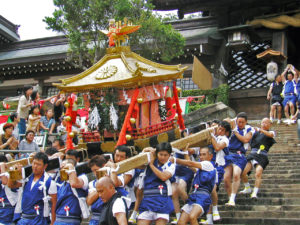 |
|
|
At the outset, dedicated dance were very simple but gradually became colorful. During Eiho Era
(1673-80), a Chinese dance with an exotic flavor offered to the shrine. The Ja-odori or snake dance
was first performed in the Nagasaki Kunchi during period 1789-1800. In 1970, the government
designated the whole of Nagasaki Kunchi dance including Ja-odori as an Important Intangible
Cultural Asset.
|
|
|
|
Home Tailor-made tours Study tours Christian Pilgrimage tours Golf tour Kyushu tour packages




